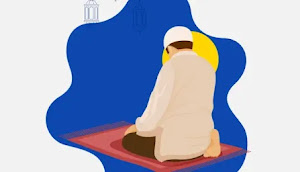
JAKARTA — The Hijri calendar, or Islamic lunar calendar, serves as a Muslim symbol and identity for determining prayer times and religious celebrations. After the passing of Prophet Muhammad (peace be upon him) in the 7th century CE, his companions embraced the Hijri calendar as a guiding principle that they diligently followed.
As the Islamic Caliphate expanded, the calendar dates gained significance for legal decisions, agreements, and important documents, providing an organized system for communication and order.
The Beginnings of the Hijr Calendar
Despite agreeing on the months and days in the calendar, the companions encountered difficulties in documenting events on an annual basis. In cases where events or documents had incomplete dates, they faced uncertainty about the corresponding year.
To address this, they sought to establish a definitive starting point for an era that could serve as a reference. Historical figures like al-Shaʿbi and al-Biruni have demonstrated the use of significant events as benchmarks for defining eras throughout history.
Similarly, in pre-Islamic Arab culture, events such as the death of Kaʿab ibn Luʾayy, the Year of the Elephant (ʿAm al-Fil), and the Fijar War (Harb al-Fijar) served as notable time markers.
In the historical chronicle, Tarikh al-Rusul wa al-Muluk, Imam Thabari stated: Maymun bin Mihran narrated that the month of Sha’ban was written on a legal document sent to ʿUmar.
ʿUmar inquired: Is this Sha’ban of the previous year or the upcoming year? He then suggested the companions establish a unified starting point for the community to refer to.
Agreement on the Hijrah (Migration)
At that time, ʿUmar and his companions discussed how to document those events. They agreed to use the method of foreign nations in writing date, “in this month, this year.” However, the question arose about which year should be the starting point.
Suggestions were made to use Prophet Muhammad’s first revelation or his passing as the starting point. After lengthy discussions, the companions unanimously agreed to use the Hijrah (migration) as the beginning of the Islamic era.
While Ramadan was proposed as the initial month, the companions ultimately decided to start the year with the month of Muharram.
Under ʿUmar’s caliphate, the companions unanimously chose the Hijrah of Prophet Muhammad as the starting point for the Islamic era. This Hijrah carried profound meaning, marking the distinction between truth and falsehood.
By establishing the Hijrah as the reference point, Muslims had a solid basis for measuring time and affirming their identity as followers of Islam.
The Islamic calendar serves as a timekeeping tool and a symbol of Muslim identity and heritage. The companions recognized the significance of maintaining order and consistency in using the calendar, ensuring the preservation of Allah’s commands and the teachings of His Messenger.
The Wisdom of the Name “Hijri”
The name “Hijriyah” is derived from the Hijrah of Prophet Muhammad’s migration from Mecca to Medina in 622 CE. This pivotal moment in Islamic history signifies the Prophet and his companions’ transition to establish a new Islamic state in Medina.
The companions made the decision to use the Hijrah as the starting point of the Hijri calendar following the Prophet’s passing.
The Hijrah holds profound significance, representing the separation of Prophet Muhammad’s life in Mecca and Medina and marking the formation of a strong Muslim community and the foundation of Islam as a comprehensive religion and way of life.
The utilization of the Hijri calendar, commencing from the Hijrah, enables Muslims to maintain a connection to their historical roots and their Muslim identity. It becomes a constant reminder of the values and teachings imparted by Prophet Muhammad during and after the Hijrah.
By knowing and understanding the history of calculating the Hijri year based on the Hijrah event, Muslims can appreciate and celebrate religious observances with a deeper understanding.
Additionally, it reminds them of their commitment to follow in the footsteps of Prophet Muhammad and his companions in preserving the unity of the Muslim community and upholding Islamic values in their daily lives.
Comprehending the history of calculating the Hijri year based on the Hijrah enables Muslims to appreciate and celebrate religious observances with a deeper understanding.
Moreover, it reinforces their commitment to follow Prophet Muhammad and his companions in preserving the unity of the Muslim community and upholding Islamic values in their daily lives.*** (mhmd)



















